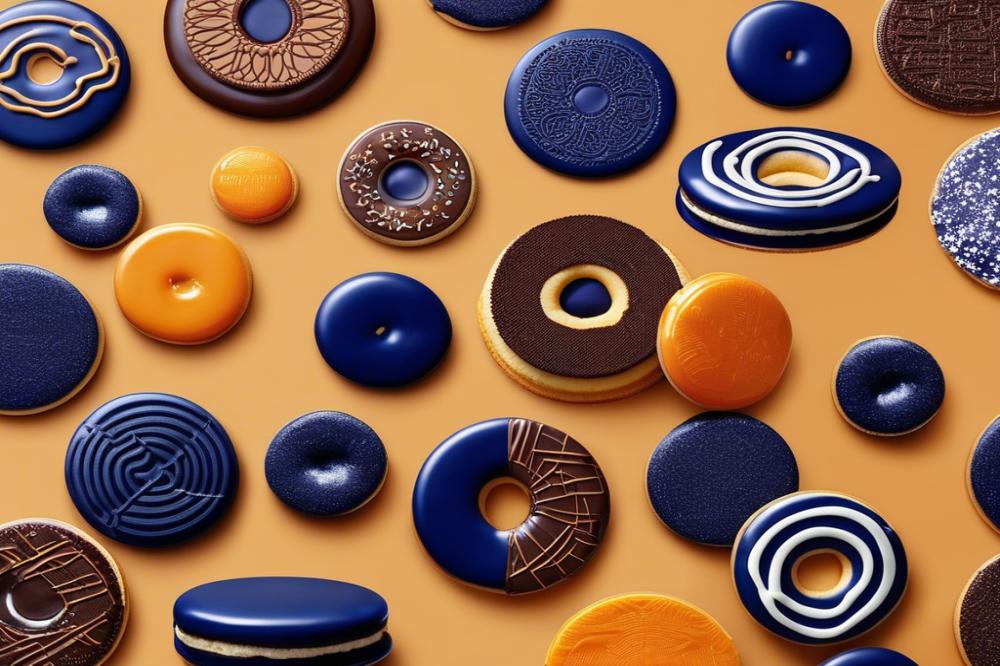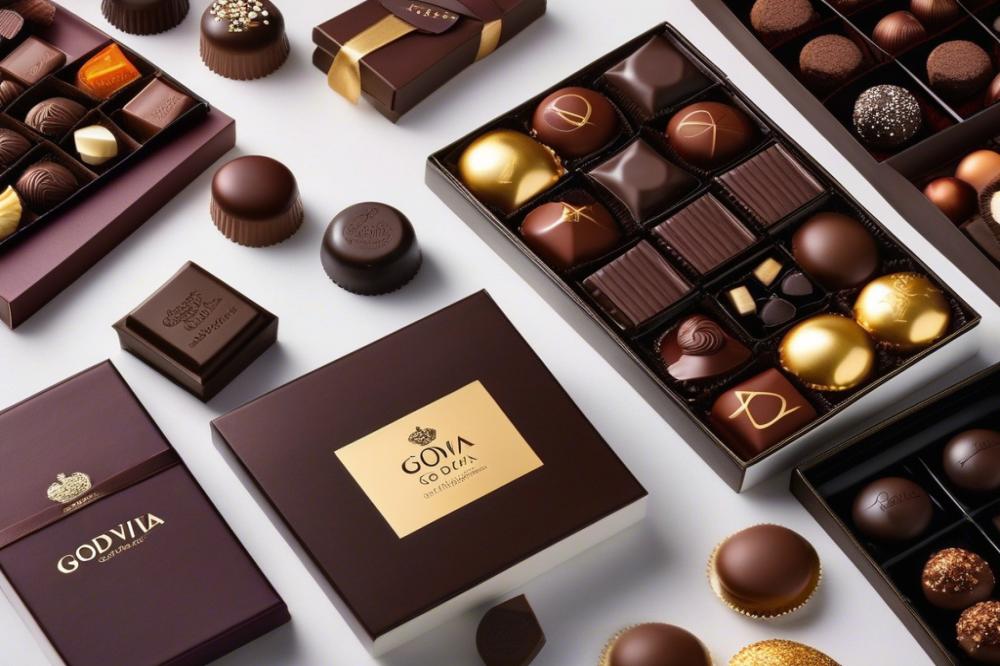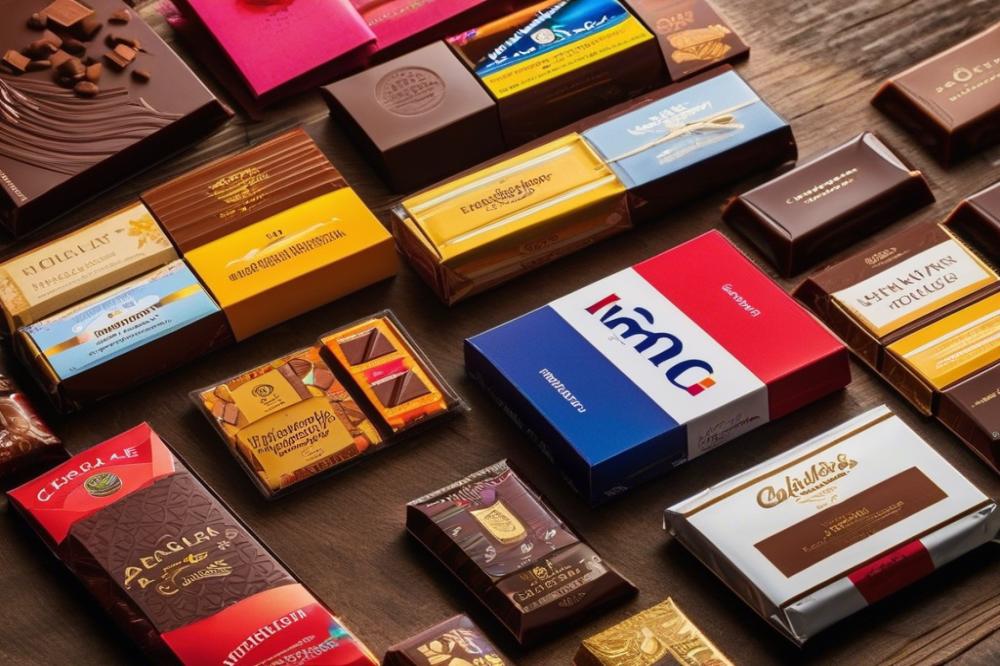Understanding the Sweet Controversy
Jaffa Cakes have earned their place as a beloved UK snack. These delightful treats combine a sponge base with a layer of tangy orange jelly and a rich chocolate topping. Many people have enjoyed them during tea time, but a deeper discussion often emerges about their rightful classification. Are they a biscuit or a cake?
The ongoing food debate surrounding their classification raises eyebrows and sparks conversations. When you bite into one, it is hard not to wonder about the nature of these snacks. Texture analysis reveals a soft sponge that balances well with the firm chocolate. This complexity underlines why the classification issue captivates snack lovers across the UK.
Legal classification plays a significant role in this dialogue. In a landmark court case, the distinction became pivotal for tax purposes. The ruling determined that these treats are classified as cakes, impacting consumer preference. Some may argue that this classification lacks common sense. However, understanding the background of snack history might shed light on this divisive topic. The biscuit vs cake debate transcends mere opinion, forming a part of confectionery lore that is as rich and varied as the snacks themselves.
Navigating this discussion isn’t solely about what fills our cupboards. It taps into broader themes of identity and tradition in the world of food. Everyone seems to have an opinion on this subject, and it’s clear that Jaffa Cakes are more than just a snack; they are a symbol of culinary classification in the UK.
Jaffa Cakes: A UK snack from the Start

Originating in the early 20th century, Jaffa Cakes made their grand entrance into the UK market around 1927. They were created by McVitie’s, a well-known biscuit manufacturer, and named after the Jaffa orange. This snack quickly became popular due to its sweet flavor and distinctive structure.
The chocolate topping enchants consumers, offering an indulgent layer that pairs perfectly with the cake-like base. A sponge base provides a soft, chewy texture, making them an appealing choice for many. Round in shape, these treats are easily stackable, enhancing their allure as a snack.
Consumer preference has firmly established this product as a staple in the UK snack scene. Many enjoy these treats at parties, in lunchboxes, or simply as an afternoon pick-me-up. The ongoing food debate about their classification adds an intriguing layer to their snack history, drawing interest from both casual eaters and food enthusiasts alike.
A landmark court case in 1991, which sought to legally classify these items, highlighted their status as cakes rather than biscuits. This decision was based on a texture analysis and other factors that contribute to their identity. As a result, people often find themselves pondering their role in the confectionery landscape.
British consumers have embraced Jaffa Cakes wholeheartedly. Their appeal lies not just in taste but also in their versatility as a snack option. Throughout the years, these delectable treats have maintained a firm place in British culture and will likely continue to be a beloved favorite.
Legal Classification and the Famous Court Case

The legal classification of snacks has long puzzled consumers and food enthusiasts alike. Generally, biscuits and cakes differ in several key aspects. The most notable is their texture. Cakes are fluffy and soft, while biscuits tend to be crisp and more solid. This basic understanding forms the foundation of the ongoing food debate surrounding various products, including our beloved snack.
In 1991, a significant court case captured the public’s attention. McVitie’s faced legal scrutiny over the VAT implications tied to their popular treat, often known for its chocolate topping and sponge base. The outcome of this case hinged on whether this snack should be classified as a biscuit or a cake for tax purposes. Understanding this distinction was crucial because cakes are exempt from VAT, whereas biscuits incur a tax.
During the court proceedings, experts analyzed the product’s properties closely. Texture analysis revealed that the soft sponge-like consistency heavily influenced the classification. The judges noted that Jaffa Cakes are indeed more akin to cakes in consistency, yet their marketing and consumer preference leaned towards biscuits. This analysis played a vital role in determining the final outcome of the case.
Ultimately, the court ruled in favor of McVitie’s. This verdict solidified the classification of Jaffa Cakes as biscuits for tax purposes, despite their cake-like qualities. The implications extended beyond just tax; it affirmed a place in the snack history of the UK snack market. The ruling brought clarity to a murky issue, paving the way for ongoing discussions around confectionery and snack classifications.
Texture Analysis: Why Jaffa Cakes Resemble Biscuits

When examining the structure of this popular UK snack, one quickly discovers its intriguing texture. The sponge base plays a pivotal role in creating a biscuit-like quality. Unlike traditional cakes, which tend to be soft and airy, this snack has a firmer foundation. People often describe its consistency as more comparable to a biscuit rather than a cake.
In a food debate that many have engaged in, texture is a key factor in the legal classification of these treats. Cakes are typically light and fluffy, while biscuits have a denser, crisper structure. This distinction becomes especially relevant when analyzing the construction of our snack. The chocolate topping adds an additional layer to its texture, enhancing the overall experience while keeping it distinctly snack-like.
A significant aspect of the sponge base lies in its ability to provide a sturdy base for the sweet layer above. This construction mimics the appeal of biscuits. When taking a bite, the feeling of crunch combined with the slight give of the sponge creates uniquely pleasing mouthfeel. Such characteristics align more closely with consumer preference for biscuits than for cake.
The snack history of these treats spans decades, leading to court cases that have debated their classification. Ultimately, the combination of textures reveals a fascinating conclusion. While they might evoke the look of a cake, analysis shows that their true nature is far more akin to that of a biscuit. The delightful interplay between the components cements their place in the world of confectionery.
The Chocolate Topping and Its Impact on Classification
One of the most defining features of the popular UK snack is its chocolate topping. This layer of chocolate adds a rich, sweet contrast to the sponge base beneath it. In the world of confectionery, chocolate plays a crucial role in shaping how we view a snack’s identity. Delicious toppings often elevate a product, influencing perceptions about whether it belongs in the cookie or cake category.
When we consider other biscuit varieties, chocolate frequently plays a central role. Think of chocolate digestives or bourbon biscuits. Their classification as biscuits might stem from the characteristics of the cookies and their function as snacks. This similar presence of chocolate creates a comparison point, making it easier for consumers to form opinions. Texture analysis of chocolate-covered snacks reveals a delightful crunch followed by the soft sponge. This combination can blur the lines between cakes and biscuits.
The impact of toppings goes beyond just taste. They can significantly affect consumer preferences. Many people lean towards snacks that incorporate chocolate, associating this sweet treat with indulgence. The debate over the legal classification of baked goods gained spotlight during a famous court case. The courts determined that the topping played a pivotal role in defining these snacks. Chocolate provided sufficient justification for classifying the treat as a biscuit rather than a cake, despite having a cake-like sponge base.
This ongoing food debate showcases how toppings influence product identity. Consumers often gravitate toward chocolate-laden items due to their appeal. Desiring the combination of sweetness and soft texture, snack history reveals that chocolate-topped treats have maintained a lasting popularity. In the end, the chocolate covering does not just enhance flavor; it effectively shapes our understanding of what a biscuit truly is.
Broader Context: Famous chocolate biscuits Around the World
Many different chocolate biscuits enjoy popularity across the globe. In the UK, chocolate digestives reign supreme, loved for their rich flavor and satisfying crunch. They have a crisp texture and a deep cocoa taste that makes them irresistible. Australia boasts Tim Tams, which feature a chewy biscuit layer sandwiched with chocolate cream and coated in chocolate. The layers create an indulgent treat that many adore.
In contrast, France offers petit écoliers, consisting of a biscuit base topped with a thick layer of dark chocolate. The combination of textures makes them delightful, catering to those who love a richer chocolate experience. Meanwhile, countries like India have their own take on chocolate biscuits, such as Bourbon biscuits, which pair a chocolate filling between two cocoa-flavored biscuits. Each of these snacks reveals a fascinating food debate around flavors and textures.
Another key aspect is texture analysis. Chocolate digestives offer a crunchy bite, while the soft sponge base of the one in question has a contrasting squishiness. The chocolate topping adds a creaminess that engages the palate differently. Such diversity in texture captures the hearts of snack enthusiasts worldwide.
When considering these snacks, the legal classification often arises. A famous court case in the UK revolved around whether the aforementioned treat was a biscuit or a cake. This discussion highlights the complexity of consumer preference and legal standards surrounding snack foods. Despite the differing categories, all share the goal of satisfying cravings.
Throughout snack history, chocolate biscuits have evolved to meet tastes, preferences, and cultural influences. They can be found in various flavors and styles, each more appealing than the last. While enjoying these delights, it becomes clear how they fit within the global landscape of snack foods, offering diverse tastes and textures that resonate with people from all walks of life.
Final Thoughts
Recapping the points made, it’s important to remember why this delightful treat is classified as a biscuit. The texture resembles that of classic biscuits, being crisp and firm rather than airy like a cake. Its round shape and packaging also align more with biscuits than cakes. Moreover, the legal classification in the UK further supports this notion, as it determines how products are taxed and marketed.
Jaffa Cakes are more than just a sweet treat; they hold a special place in the hearts of many in the UK. From tea time to casual snacking, they have become a part of everyday life. Their popularity showcases how a simple biscuit can bring joy and comfort. People enjoy the blend of chocolate, orange, and biscuit, which creates a unique snacking experience.
The debate surrounding food classifications is ongoing and often confusing. Consumer perceptions can vary widely, leading to discussions that entertain and sometimes frustrate food enthusiasts. Many individuals might argue about whether something should be categorized as a cake or snack. This conversation enriches the culinary landscape, making it more intriguing.
As this topic continues to evolve, it reminds us that even something as simple as a biscuit can spark lively debates. Embracing these conversations can lead to a deeper appreciation of our favorite UK snacks while keeping the spirit of culinary curiosity alive.



